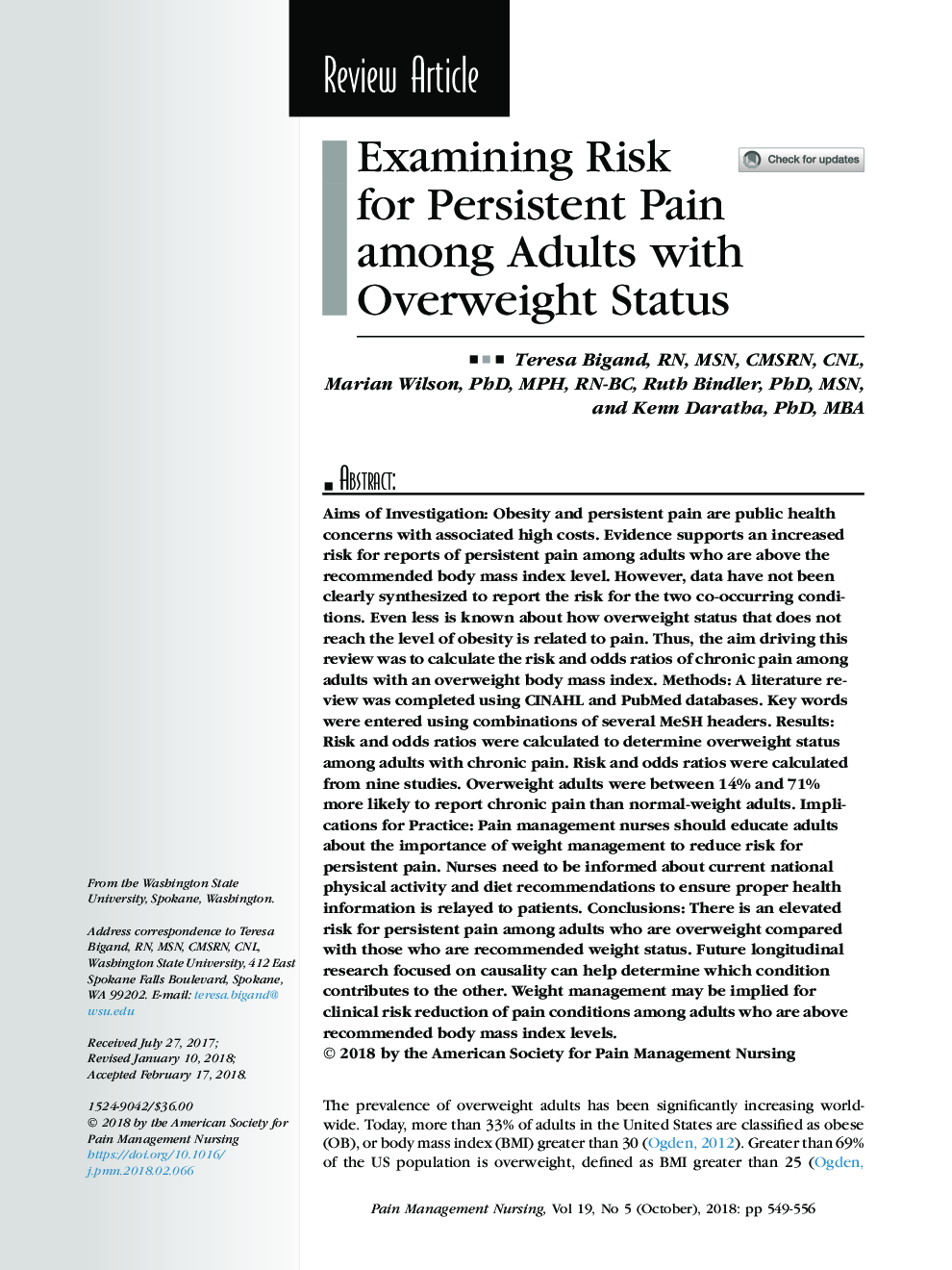| Article ID | Journal | Published Year | Pages | File Type |
|---|---|---|---|---|
| 11010627 | Pain Management Nursing | 2018 | 8 Pages |
Abstract
Aims of Investigation: Obesity and persistent pain are public health concerns with associated high costs. Evidence supports an increased risk for reports of persistent pain among adults who are above the recommended body mass index level. However, data have not been clearly synthesized to report the risk for the two co-occurring conditions. Even less is known about how overweight status that does not reach the level of obesity is related to pain. Thus, the aim driving this review was to calculate the risk and odds ratios of chronic pain among adults with an overweight body mass index. Methods: A literature review was completed using CINAHL and PubMed databases. Key words were entered using combinations of several MeSH headers. Results: Risk and odds ratios were calculated to determine overweight status among adults with chronic pain. Risk and odds ratios were calculated from nine studies. Overweight adults were between 14% and 71% more likely to report chronic pain than normal-weight adults. Implications for Practice: Pain management nurses should educate adults about the importance of weight management to reduce risk for persistent pain. Nurses need to be informed about current national physical activity and diet recommendations to ensure proper health information is relayed to patients. Conclusions: There is an elevated risk for persistent pain among adults who are overweight compared with those who are recommended weight status. Future longitudinal research focused on causality can help determine which condition contributes to the other. Weight management may be implied for clinical risk reduction of pain conditions among adults who are above recommended body mass index levels.
Related Topics
Health Sciences
Medicine and Dentistry
Anesthesiology and Pain Medicine
Authors
Teresa RN, MSN, CMSRN, CNL, Marian PhD, MPH, RN-BC, Ruth PhD, MSN, Kenn PhD, MBA,
